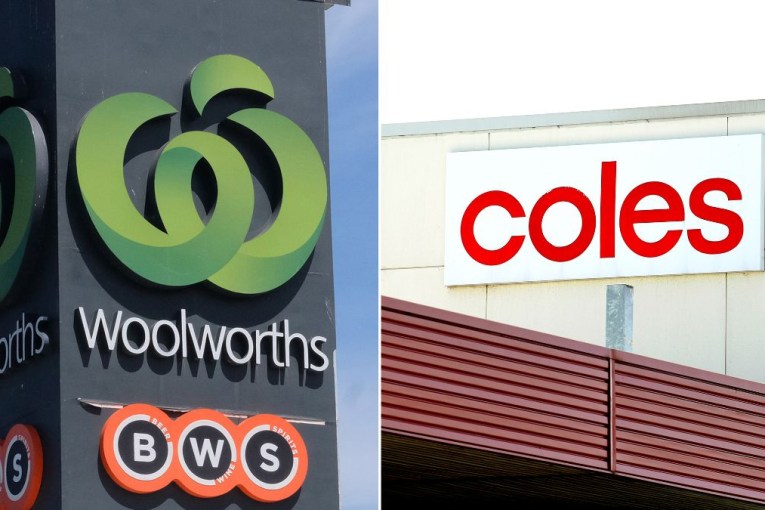Experts issue privacy warning as Woolworths expands camera and AI technology at checkouts

Woolworths is expanding its self-serve cameras and AI technology to more stores across three states, in a move that worries privacy experts.
A Woolworths spokesperson confirmed to The New Daily that the technology will be in more stores in New South Wales, Victoria and Queensland.
The tech was trialled at the Woolworths in Seven Hills and is now used in more than 250 stores.
However, experts have raised privacy concerns about the technology.
Professor of business information systems at the University of Sydney Business School, Uri Gal, told The New Daily that as a society, we need to “tread with caution” when it comes to such technology.
Professor Gal said these technologies being rolled out across different sectors and stores weren’t considered acceptable just a few years ago, so we should be concerned about their normalisation.
“Once you break the bottle, you can’t put the genie back in the bottle,” he said.
How do the self-serve checkouts at Woolworths work?
The camera and artificial intelligence detects when items aren’t scanned correctly at the self-serve checkout.
The cameras are positioned overhead and are angled to detect activity at both assisted and staffed checkouts.
If something is not scanned properly and placed in the bagging area, the screen will show a short video on the screen of the product, giving the customer a chance to re-scan the item.
Products being left in baskets or trolleys, mis-scanning of products or passing a product through as something unrelated could all be counted as “mis-scans”.
The footage captured cannot be viewed live and if faces are inadvertently detected, they are blurred when the footage is reviewed by a person, to protect the customer’s anonymity. Pin pads are also blacked out in the vision.

The technology aims to give customers a chance to scan items they missed, Woolworths said. Photo: Supplied
Woolworths also has technology that scans fruit and vegetables when placed on the self-serve checkout.
“The system uses image-recognition technology to filter the list of possible products based on their colour, shape or size,” a Woolworths spokesperson said.
“So if a customer places a loose tomato on the scanner, the system will show a range of tomato varieties rather than the full list of fruit and veg items. This makes our self-serve that little bit faster and improves the accuracy of product selection for customers.”
That “pick list assist” technology will be gradually rolled out to Woolworths stores across Australia, with 685 of Woolworths’ 1000 stores already using it. These cameras do not record any vision.
Is there a need for this technology?
Associate Professor Rob Nicholls is from UNSW Business School and is a visiting professional fellow at UTS Sydney Law, who specialises in regulation and governance.
He says there is logic behind the overhead cameras at Woolworths, but he thinks the most effective way to monitor the self-serve checkouts is by directing a camera at the produce, like Woolworths’ pick and assist technology.
“You need a camera, or potentially need a camera, when the customer is weighing goods and then saying what they are,” he told The New Daily.
This way, people would be deterred from saying, for example, their avocados are potatoes to get them at a cheaper cost.
“If you’re gonna put a camera up there in order to detect fraud, if you take a privacy by design approach, you’re actually not interested in the person, all you’re interested in is the article,” he said.
Woolworths’ spokesperson defended the overhead cameras: “It helps reduce mis-scans and is one of a number of initiatives we’ve rolled out across our checkouts to make shopping more convenient and seamless,” they said.
“While most customers do the right thing at our self-serve checkouts, we’re all busy and mistakes can easily happen.”
Professor Nicholls said Woolworths should be questioning whether it wants to alienate its loyal customers, or just the few who shoplift.
For all retailers, it’s a balancing act, he said. By reducing shoplifting, prices across stores could be reduced and they’re not at a loss.
But if a retailer alienates customers by using technology, the customer can take their business elsewhere.
“With supermarkets, at least, there is some measure of competition,” Professor Nicholls said.
“If privacy becomes a competitive profit proposition, then there’s a real risk if you try and adversely affect the privacy of your customers.”
Is this any different from traditional CCTV?
Most retail spaces will have CCTV – however, you are still guaranteed a degree of privacy, as long as you’re not doing anything wrong.
However, sometimes you identify yourself at the checkout. You may scan a rewards card or pay by card, Professor Nicholls says.
The New Daily understands the system used by Woolworths is meant as a deterrent and gives customers a chance to make sure they pay for everything. Any identifying details are not stored by Woolworths.
Professor Gal said people should be concerned about the gradual mission creep of surveillance technologies.

People should be concerned about the creeping nature of technologies in all spaces. Photo: Getty
A mission creep is when there is a technology or a policy that is meant to address one thing, but is then applied to different contexts and spaces.
“So that it ends up achieving things that you didn’t think it could achieve in the first place or allow things that you didn’t think it would allow in the first place,” he said.
“And I think that’s what we’ve seen here.”
People want to believe big companies have the best intentions and their goal is to make things more efficient for the consumer with such surveillance, but people should exercise caution when it comes to their privacy in any context, Professor Gal said.
“I think the reality is that there are real negative externalities here when it comes to people’s privacy.”








